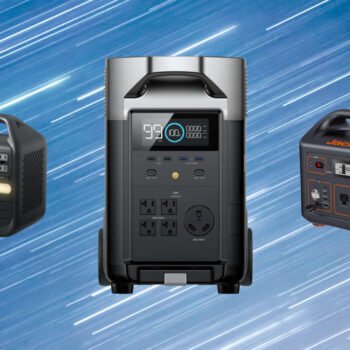TL;DR
- For most users: Wait. Wi-Fi 6 still delivers excellent performance for typical home needs
- For power users: Consider Wi-Fi 7 if you have 20+ devices, do VR gaming, or transfer large files frequently
- Budget conscious: Wi-Fi 6 routers are now cheaper and offer great value
- Future-proofing: Wi-Fi 7 makes sense if you plan to keep your router for 5+ years
- Device compatibility: Few devices support Wi-Fi 7 yet, limiting immediate benefits
- Real-world speeds: Your internet plan likely can’t saturate either standard’s capabilities
Introduction: The Next Wireless Revolution is Here
That router in your corner? It’s beginning to show its age. You notice during a frozen video call, a stuttering 4K stream, or the moment a housemate downloads a file and the whole network slows down.
Now, Wi-Fi 7 promises incredible speed. It’s a pretty tempting leap forward. But Wi-Fi 6 gear is now seriously affordable. So, what’s the better move? Do you get ready for the future with newest tech, or pick up a solid, discounted Wi-Fi 6 router?
A smarter buy doesn’t come from a spec sheet. It comes from your home’s specific chaos. Your own needs should guide the choice. Here’s a simple breakdown.
Back to Basics: What Are Wi-Fi 6 and Wi-Fi 7?
Wi-Fi 6 (802.11ax): The Current Standard
Wi-Fi 6 launched in 2019 and represents a massive leap from its predecessor, Wi-Fi 5. This standard introduced several game-changing features:
- OFDMA technology lets routers handle multiple devices simultaneously instead of one at a time
- Target Wake Time helps devices save battery by scheduling when they connect
- 1024-QAM packs more data into each transmission
- MU-MIMO improvements allow better multi-device performance
Wi-Fi 6 usually delivers speeds between 100 and 600 Mbps in real-world conditions. But reaching that maximum isn’t guaranteed. Your actual performance depends on both your router’s hardware and the environment around it.
Wi-Fi 6E: Wi-Fi 6’s Game-Changing Sibling
Wi-Fi 6E takes what Wi-Fi 6 does and opens up a fresh 6 GHz band. This is more than a simple upgrade; it’s entirely new space. You get much more room, meaning many clear channels. This new spectrum avoids interference and lag common on crowded bands.
This extra spectrum provides:
- Less congestion since fewer devices use 6 GHz
- Wider channels for higher speeds
- Lower latency due to reduced interference
Wi-Fi 6E bridges the gap between Wi-Fi 6 and Wi-Fi 7, offering many benefits without the premium price tag.
Wi-Fi 7 (802.11be): The Future, Unveiled
Wi-Fi 7 represents the biggest technological leap in wireless networking in years. While Wi-Fi 6 was about efficiency, Wi-Fi 7 is about raw performance and smart optimization.
Key improvements include:
- Theoretical speeds up to 46 Gbps (though real-world speeds will be much lower)
- Multi-Link Operation for smarter connection management
- 320 MHz channels that double Wi-Fi 6’s maximum width
- 4K QAM for even denser data packing
The Core Battle: Wi-Fi 6 vs Wi-Fi 7 Technical Breakdown
Speed: Theoretical vs. Real-World Throughput
Wi-Fi 7’s headline-grabbing speeds sound incredible, but let’s talk reality. Most home internet plans max out at 1 Gbps, and many people have 100-500 Mbps connections.
Wi-Fi 6 typically delivers:
- 300-600 Mbps in real-world conditions
- More than enough for 4K streaming, video calls, and gaming
- Perfect for most home internet plans
Wi-Fi 7 can theoretically deliver:
- 1-3 Gbps in optimal conditions
- Overkill for current internet speeds
- Beneficial mainly for internal network transfers
Unless you’re constantly moving large files between devices on your network, Wi-Fi 6 speed is probably sufficient.
Latency: The True Game-Changer for Gamers and VR
Wi-Fi 7 brings in Multi-Link Operation, or MLO. Imagine your device bonding several wireless links together. This method avoids interference. It stops those sudden lag spikes that ruin a game at the worst moment.
You get a ping that stays low and steady. Even with other people streaming video on your network, you see no more dropped data. For competitive or VR gaming, this solid connection makes all the difference. It stops random interruptions from deciding the final score.
Capacity & Efficiency
Our homes are full of connected tech now. Wi-Fi 7 helps by bringing order to this busy network. It can separate different devices, so a smart light won’t interrupt your movie stream.
Think about how many devices a network can handle. Wi-Fi 6 does okay. It tops out around two dozen gadgets. But Wi-Fi 7? It powers through thirty or more connections with no trouble.
For a family that loves smart home tech, this means no more lag. Your video feed stays clear while other devices keep streaming. Your network just works, staying reliably out of your way.
Frequency Bands
Both Wi-Fi 6E and Wi-Fi 7 support the 6 GHz band, but Wi-Fi 7 uses it more effectively. This frequency offers:
- Wider channels for higher speeds
- Less interference from neighboring networks
- Better performance for demanding applications
However, 6 GHz has shorter range than traditional 2.4 GHz and 5 GHz bands, requiring strategic router placement.
Should You Upgrade From Wi-Fi 6 to Wi-Fi 7 Right Now?
Scenario 1: Yes, You Should Seriously Consider Wi-Fi 7
Power users with specific needs:
- You regularly transfer large files between devices on your network
- Your household has 25+ connected devices
- You do competitive gaming or professional streaming
- You work from home with demanding video conferencing needs
- You have a multi-gigabit internet connection
- You plan to keep your router for 5+ years
Early adopters who value cutting-edge tech:
- You enjoy having the latest technology
- Budget isn’t a primary concern
- You want maximum future-proofing
- Your current router is several years old
Scenario 2: No, You Can Probably Wait (Stick with Wi-Fi 6/6E)
Most typical users:
- Your internet plan is 1 Gbps or less
- You have fewer than 20 connected devices
- Your current Wi-Fi 6 router works well
- Budget is a consideration
- You prefer proven technology over bleeding-edge features
Value-conscious buyers:
- Wi-Fi 6 routers offer excellent performance at lower prices
- Wi-Fi 6E provides many benefits of Wi-Fi 7 at a fraction of the cost
- Your devices don’t support Wi-Fi 7 yet anyway
Conclusion: Making Your Decision
Most folks should just stick with Wi-Fi 6. It’s reliable and well-tested, plus prices keep falling. You can expect solid performance without wallet shock.
Upgrade to Wi-Fi 7 only if you’re a heavy user with particular needs or simply must have newest gear. Right now, device support is limited, and you’ll pay a steep early adopter fee.
A high-quality Wi-Fi 6E router hits a sweet spot. It taps into the pristine 6GHz band, which is basically a fresh highway for your data. You get most of Wi-Fi 7’s raw speed advantages—think smoother 4K streaming and instant file transfers—without the flagship price tag. It’s a serious performance upgrade that’s genuinely budget-friendly.
FAQ
Will my old devices work with Wi-Fi 7?
Your older gadgets will still connect. Phone with Wi-Fi 5 or laptop with Wi-Fi 6 won’t get locked out. Here’s the thing, though: they’re stuck in the past. They will operate exactly as they do now, missing all of Wi-Fi 7’s new features. You see no jump in speed. You get no better connection stability. It is backward compatible, yes, but you receive zero perks.
What about real-world speed improvements?
For everyday web browsing, this upgrade feels minor. But inside your home is where you see a big difference. Imagine moving a 4K movie in a blink. Play competitive games without annoying lag spikes. Keep a dozen smart gadgets running smoothly together. Your internet speed from the provider stays the same; Wi-Fi 7 just makes your internal network much stronger, turning it into a real workhorse.
How much more does a Wi-Fi 7 router cost?
Wi-Fi 7 routers cost a pretty penny. Expect to pay $300, even $800. That’s a lot more than a good Wi-Fi 6 model, which runs from $100 to $300. This high cost won’t last for long. Prices always drop fast once more people start buying and companies make more units. It’s the same pattern we saw with past Wi-Fi versions at launch.





